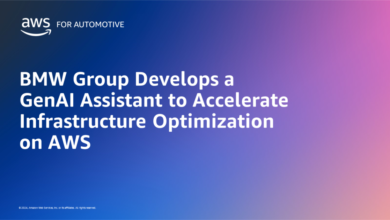Cloud Compliance Frameworks: Ensuring Data Security and Regulatory Adherence in the Digital Age

The Apollo 13 Odyssey and Cloud Security: Ensuring a Safe Return in the Digital Frontier
The Apollo 13 mission stands out as a testament to human resilience and the critical importance of meticulous planning. Launched in 1970 to land on the moon, Apollo 13 faced an unforeseen crisis—an oxygen tank explosion jeopardizing the astronauts’ lives and the mission’s success. The subsequent journey back to Earth became a defining moment for NASA, requiring ingenuity, adaptability, and an unwavering commitment to safety.
In today’s digital frontier, organizations embark on their odyssey—harnessing the vast potential of the cloud. However, like the challenges faced by Apollo 13, navigating this digital space demands a robust strategy to ensure a safe return for sensitive data. Enter cloud compliance frameworks—the mission control centers of the digital age—providing the necessary guidelines and protocols to avert crises and navigate the complexities of data security.
What are Cloud Architecture Frameworks?
Cloud architecture frameworks are comprehensive structures or sets of guidelines designed to assist in the planning, designing, and implementing of cloud-based systems and solutions. They systematically organize and build cloud architecture, addressing key considerations such as scalability, security, reliability, performance, and cost optimization.
Popular Cloud Architecture Frameworks:
- The AWS Well-Architected Framework (WAF)
The AWS Well-Architected Framework (WAF) serves as a beacon in the cloud, offering a set of best practices designed to help organizations build secure, high-performing, resilient, and efficient application infrastructures.
- Operational Excellence: Ensures organizations can efficiently run and monitor their systems to deliver business value and innovation.
- Security: Emphasizes implementing robust security measures, including data protection and identity management. It safeguards organizations against the myriad threats lurking in the digital cosmos.
- Reliability: Ensures that workloads operate reliably and recover from failures, contributing to a resilient and dependable digital infrastructure.
- Performance Efficiency: Optimizing performance based on workload requirements. It guides organizations in utilizing cloud resources efficiently to achieve optimal outcomes.
- Cost Optimization: Ensures organizations get the most value from their investments in the cloud.
- The Google Cloud Architected Framework
Developed by Google Cloud, the Google Cloud Architected Framework provides guidelines for constructing and enhancing cloud offerings. It emphasizes key principles, offering a comprehensive approach to designing secure, reliable, and performant solutions.
- Operational Excellence: Similar to the AWS WAF, this principle focuses on operational best practices, automation, monitoring, and incident response. It ensures that organizations maintain efficiency in their operations and respond effectively to unforeseen events.
- Security and Compliance: The security and compliance pillar provides guidelines for implementing strong security controls and ensuring adherence to regulatory requirements. It safeguards organizations against threats and legal complexities in the digital galaxy.
- Reliability: Just like the reliability pillar in AWS WAF, Google Cloud emphasizes designing systems that are resilient to failures, with strategies for disaster recovery. Reliability ensures organizations can navigate through unexpected challenges in the cloud.
- Azure Architecture Framework
Microsoft’s Azure Architecture Framework guides best practices for building solutions on the Azure cloud platform. Comprising five pillars—Cost Optimization, Operational Excellence, Reliability, Performance Efficiency, and Security—it provides a robust foundation for organizations venturing into the expansive Azure nebula.
- Cost Optimization: Cost optimization in the Azure Nebula involves managing costs and ensuring value for money. The framework provides insights and guidelines for organizations to optimize their expenditures in the cloud.
- Operational Excellence: Similar to other frameworks, operational excellence in Azure emphasizes efficient operations, automation, and continuous improvement. It ensures that organizations maintain high levels of efficiency and adaptability in their operations.
- Reliability: The reliability pillar in Azure focuses on ensuring systems are reliable and available, incorporating fault tolerance and disaster recovery strategies. It contributes to the overall resilience of cloud-based systems.
- Performance Efficiency: This pillar guides organizations in optimizing performance based on workload requirements, ensuring that applications and workloads in the Azure cloud perform efficiently.
- Security: The security pillar provides comprehensive guidelines for implementing robust security measures, including identity management and threat protection. It ensures that organizations establish a secure perimeter in the Azure cloud.
Are Cloud Architecture Frameworks Mandated?
Cloud frameworks provided by major cloud service providers such as Google Cloud, AWS, and Azure are not mandatory requirements imposed by external governing bodies or regulatory authorities. Instead, the respective cloud providers offer these frameworks as best practices and guidelines to help organizations enhance their cloud deployments’ security, reliability, and efficiency. Organizations are encouraged to voluntarily adopt these cloud computing regulatory frameworks to align with industry standards and ensure their cloud architectures meet recommended security principles.
The decision to implement a specific cloud computing compliance framework depends on various factors, including the organization’s specific security requirements, industry regulations, and the nature of the data being processed or stored in the cloud. While these cloud providers offer robust security features and compliance tools, the responsibility for configuring and utilizing these features lies with the organizations themselves.
External regulatory bodies and industry-specific cloud security compliance standards may mandate certain security practices but typically do not prescribe using a specific cloud provider’s framework. Instead, these regulations often outline general security and data protection principles that organizations must adhere to, allowing flexibility in choosing the tools and frameworks that best suit their needs.
Organizations can choose the frameworks and tools that align with their specific security and compliance requirements while ensuring they meet the standards set by relevant regulations.
Compliance Frameworks That Support Cloud Security
- Cloud Security Alliance Controls Matrix (CSA CM)
The Cloud Security Alliance Controls Matrix (CSA CM) is a comprehensive set of security controls designed for cloud environments. It is the guardian of cosmic security, addressing critical areas such as data security, identity and access management, and network security.
Data Security: CSA CM provides guidelines and controls to ensure data security in the cloud. It encompasses encryption, data integrity, and secure storage practices.
Identity and Access Management (IAM): IAM controls in CSA CM focus on securing user identities and controlling access to cloud resources. This ensures that only authorized entities have access to sensitive information.
Network Security: The matrix addresses network security, offering a structured approach to enhancing security postures in the cloud. It includes controls for securing communication channels and preventing unauthorized access.
- FedRAMP (Federal Risk and Authorization Management Program): A Shield for Government Galaxies
Targeted at U.S. federal agencies and organizations doing business with the government, FedRAMP sets stringent standards for cloud security. It acts as a shield for government galaxies, ensuring that cloud service providers adhere to necessary security controls and safeguards.
Security Controls: FedRAMP mandates specific security controls to protect government data. These controls include measures for encryption, access control, and continuous monitoring to maintain a secure environment.
Data Safeguards: The program focuses on safeguarding sensitive government data, establishing a benchmark for security practices in the cloud. It ensures that cloud service providers meet the high standards required for handling government information.
- ISO/IEC 27001: Fortifying the Information Constellation
As an international standard for information security management systems (ISMS), ISO/IEC 27001 fortifies the information constellation in the digital universe. It sets the stage for robust security practices, encompassing risk management, access controls, and encryption.
Risk Management: ISO/IEC 27001 emphasizes a systematic approach to risk management. Organizations adhering to this standard are committed to identifying, assessing, and mitigating risks in the digital landscape.
Access Controls: The framework includes guidelines for access controls, ensuring that only authorized individuals can access sensitive information. This contributes to the overall integrity and confidentiality of data.
Encryption Practices: ISO/IEC 27001 addresses encryption as a fundamental security practice. It ensures that data processing and storage in the digital universe maintain the highest standards of confidentiality and protection.
- NIST Cybersecurity Framework
Developed by the National Institute of Standards and Technology (NIST), the NIST Cybersecurity Framework forms constellations of cybersecurity resilience. Its core functions—Identify, Protect, Detect, Respond, and Recover—offer a structured methodology applicable to cloud security.
Identify: The Identify function involves understanding and managing cybersecurity risks. Organizations using the NIST framework gain insights into their risk landscape, allowing them to make informed decisions.
Protect: Protecting against potential threats is a key element. NIST provides guidelines for implementing safeguards to ensure the security of data and systems in the digital cosmos.
Detect: The Detect function focuses on the timely identification of cybersecurity events. By incorporating detection measures, organizations can respond swiftly to emerging threats in the cloud.
Respond: In the event of a cybersecurity incident, the Respond function guides organizations in taking effective actions to mitigate the impact and recover swiftly. It ensures a proactive approach to cyber threats.
Recover: The Recover function involves planning and implementing strategies for resilience and recovery. It ensures organizations can bounce back from cybersecurity incidents and maintain operational continuity.
- CIS Controls
The Center for Internet Security (CIS) Controls is a beacon for safeguarding the cyber constellation. These controls present a set of best practices to enhance cybersecurity posture, focusing on access control, system hardening, and continuous monitoring.
Access Control: Access control measures in CIS Controls ensure that only authorized individuals can access critical systems and data. It forms a foundational element of cybersecurity.
System Hardening: System hardening involves configuring systems securely to minimize vulnerabilities. By adhering to system-hardening practices, organizations strengthen their defenses against cyber threats.
Continuous Monitoring: Continuous monitoring is a crucial aspect of cybersecurity. CIS Controls guide organizations in implementing measures for ongoing surveillance and rapid response to potential threats.
Integrating Compliance into Your Cosmic Cloud Strategy
In crafting a robust cloud security strategy, organizations must consider the regulatory landscape, leverage common cloud compliance frameworks, adopt security-centric frameworks, and adhere to cloud well-architected frameworks. Automation tools like Centraleyes significantly streamline the compliance process, allowing organizations to navigate the evolving cybersecurity landscape confidently.
As organizations embrace the boundless opportunities of cloud services, the significance of robust security measures cannot be overstated. Navigating the complex terrain of cloud security requires a strategic approach intertwined with adherence to key compliance frameworks.
Leveraging automation tools like Centraleyes proves to be a game-changer, significantly streamlining the compliance process and empowering organizations to embrace the boundless opportunities cloud services offer confidently. From safeguarding personal data to fortifying financial transactions and protecting healthcare information, each compliance framework we incorporate adds a crucial layer of resilience to our cloud security architecture. As we forge ahead into the future of the cosmic cloud, a commitment to compliance and security-centric strategies will undoubtedly be the guiding light for organizations navigating this dynamic and challenging landscape.
The post Cloud Compliance Frameworks: Ensuring Data Security and Regulatory Adherence in the Digital Age appeared first on Centraleyes.
*** This is a Security Bloggers Network syndicated blog from Centraleyes authored by Michelle Ofir Geveye. Read the original post at: https://www.centraleyes.com/cloud-compliance-frameworks/



